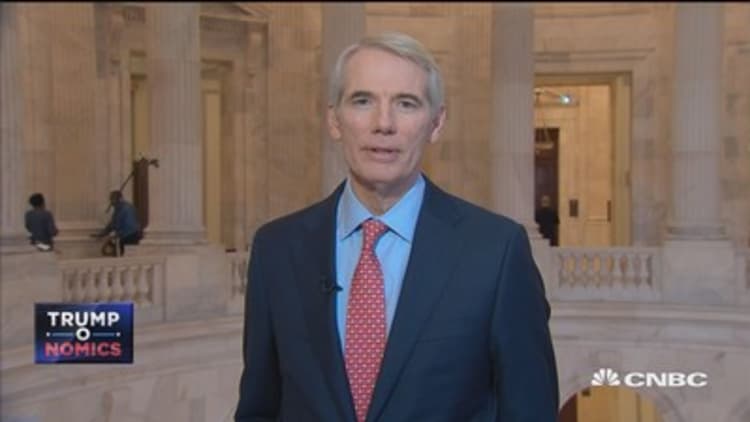Death and taxes are two sure things in life.
But steps you make before the end of the year can help mitigate the tax bite you'll face come next April.
That holds despite the debate over tax reform in Washington. House Republicans hope to introduce a tax bill on Nov. 1, sources told CNBC on Wednesday.
Regardless of the outcome, there are moves you should be thinking about now.
"The first thing I would suggest is to pull as much information as possible from this year and take a look to see where you're at," said Tim Steffen, director of advanced planning at Milwaukee-based investment firm Baird.
From there, you can troubleshoot which areas may trigger a bigger bill from the IRS.
Watch investment gains
Investors should examine their portfolios closely for gains, particularly with the S&P 500 on a record streak.
That includes taxable investments such as mutual or index funds, according to Michael Krol, head of wealth advisors, planning and business development at Waldron Private Wealth, a wealth management firm in Bridgeville, Pennsylvania.
"What happens is everybody is happy because you're making money and not paying as much attention to real-world capital gains," Krol said. As a result, you could face a bill that's not really necessary, he said.
Individuals should check on their capital gains rates, as they often do not have an accurate idea of where they really stand, according to Steffen. From there, they can make decisions about what steps would make the most sense.
With retirees, this is particularly important if a gain will be considered income that will cause their Social Security benefits to become taxable.
"You have to be careful of this ripple effect that happens through your tax return," Steffen said.
To offset gains, consider selling assets that have lost value to help minimize the effects of other portfolio growth.
Make charitable donations
While donating cash is always an option, other strategies may also help you mitigate investment gains.
Investors can donate investments like stocks or mutual funds that have had significant appreciation, suggested Michael Palazzolo, owner and financial planner at Fintentional, a Birmingham, Michigan-based financial planning firm. An investor may have invested $2,000 in a mutual fund held in a taxable account and watched it grow to $5,000. By donating it, the investor gets credit for the $5,000 donation and never pays levies on the $3,000 gain.
Investors may also want to consider establishing a donor-advised fund, which lets you donate the money now and decide where to give to later.
"Make sure you're giving because you want to and can afford to, and not just because of the tax break," Palazzolo said.

Maximize contributions to retirement accounts
Contributing to employer retirement plans like a 401(k) or 403(b) can reduce your taxable income for the year. The limit that employees can put in will increase to $18,500 next year.
Individuals who are self-employed and don't have access to these accounts can look to individual retirement accounts instead, according to Elaine Lee, wealth management advisor at Summit Place Financial Advisors in Summit, New Jersey. The annual $5,500 contribution limit will remain unchanged next year, according to the IRS.
Those who are 50 and older can also make additional catch-up contributions. That amounts to an extra $6,000 for 401(k) and 403(b) plan participants and another $1,000 for IRAs.
But individuals should review the rules carefully based on their personal situations.
Your tax deductions for money invested in an IRA may be restricted if you or your spouse have an employer retirement plan and your income is above certain thresholds set by the IRS.
Look for other ways to save
You may want to consider socking more money away into a flexible spending account for medical or child care expenses. That can include dental or vision care, prescription drugs or day care, according to Lee. Individuals will be able to contribute up to $2,650 in 2018. But those funds generally need to be used within the calendar year.
"What you don't use throughout the year, you basically lose," Lee said.
Individuals who are enrolled in a high-deductible health plan may want to maximize contributions to their health savings accounts. In 2018, singles can contribute up to $3,450 and families can put in up to $6,900. The money can be carried over from one year to another.
In addition, parents and grandparents may also want to consider funding a 529 plan, a tax-advantaged savings plan for college costs, Lee said.
More than half of U.S. states and the District of Columbia offer a credit on state income taxes for investors who contribute to their state's 529 college savings plan. Those savings can be applied to tuition and other education-related expenses.






